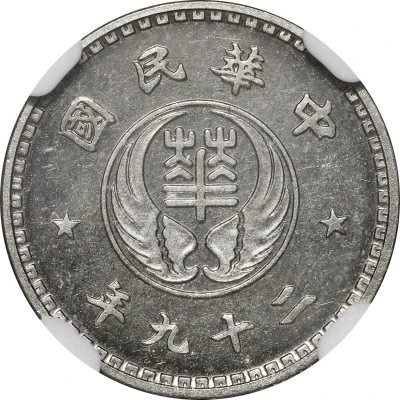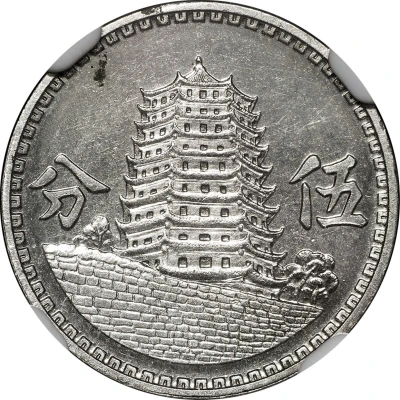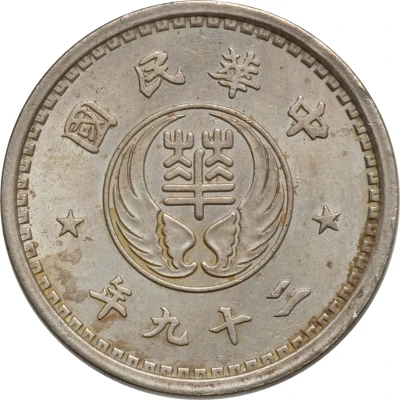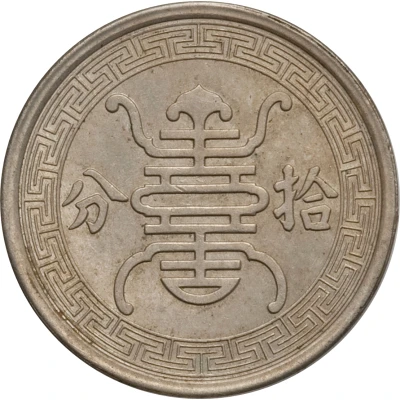


© AW - Auction World
5 Fen Hua Hsing Bank
29 (1940) year| Copper-nickel | 2 g | 16 mm |
| Issuer | Reformed Government of the Republic of China (Japanese puppet states in China) |
|---|---|
| Type | Pattern |
| Year | 29 (1940) |
| Calendar | Chinese republican |
| Value | 5 Fen (0.05) |
| Currency | Yen (1938-1941) |
| Composition | Copper-nickel |
| Weight | 2 g |
| Diameter | 16 mm |
| Thickness | 1.125 mm |
| Shape | Round |
| Technique | Milled |
| Orientation | Medal alignment ↑↑ |
| Demonetized | Yes |
| Updated | 2024-10-04 |
| Numista | N#144349 |
|---|---|
| Rarity index | 94% |
Reverse
Li-Ho Pagoda divides value
Script: Chinese
Lettering: 分 伍
Translation: 5 fen
Edge
Plain
Comment
According to THIS book these coins were instead manufactured in a private Chinese engineering concern in the Yangshupu district of Shanghai.The Liuhe Pagoda or Six Harmonies Pagoda was originally built in 970 but destroyed in 1121 and reconstructed in 1165. It is octagonal, nearly 60 m high and appears to be a 13 stories building but only has 7 interior floors. It was used as a light house for the Qiantang river in the past.
Interesting fact
One interesting fact about the Pattern 5 Fen (Hua Hsing Bank) 29 (1940) coin from the Reformed Government of the Republic of China (Japanese puppet states in China) is that it features a unique blend of Chinese and Japanese design elements. The obverse side of the coin depicts a traditional Chinese dragon, while the reverse side features the Japanese imperial chrysanthemum symbol, highlighting the complex political and cultural dynamics of the time.

